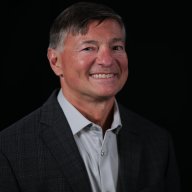
ENERVIE transforms with digitization, process excellence
ENERVIE CEO Erik Höhne has a unique blueprint for dealing with the turmoil in the utility industry: Digitization, transparency, continual process improvement and a big bet on two university students.
The independent energy service provider, which supplies electric, gas, heat and drinking water to 400,000 customers and energy trading partners in Germany's North Rhine-Westphalia region, has transformed over the last three years.
Höhne's vision for transformation has been accelerated by crises. First, ENERVIE had to manage through the COVID-19 pandemic by reorganizing to protect its workers as well as navigate plunging sales. Extreme weather events impacted operations. After the company emerged from the pandemic, the Ukraine war led to energy price spikes. Meanwhile, the energy sector in Germany and Europe faced regulatory changes. And the longer-term challenge to the energy industry is climate change and sustainability.
Also see: How two students scale process mining at ENERVIE
"The energy industry in Germany, Europe and probably worldwide is in an extreme state of flux," said Höhne. "The typical processes in the energy industry have become so complex that we will only be able to solve them with digitization," said Höhne.
Indeed, as the energy network has moved from a centralized model to a decentralized one, processes from billing to meter-to-cash and customer relationships all had to be revamped. "The degree of complexity has increased tremendously in recent years and keeping processes under control requires sufficient transparency," said Höhne. "If a gear sticks or you turn a gear, then something else turns at the very back. And you have to keep that in mind. That's why transparency is extremely important."
Procurement transparency arrives via two students
Max Aberman and Jannis Nacke, two students at the University of Applied Sciences, started an internship at ENERVIE in September 2020. The duo was charged with creating a pilot for the ENERVIE procurement department to improve processes and transparency.
"This pretty much all started as a bachelor's thesis for the both of us. ENERVIE decided on a pilot project for Celonis in procurement and accounting," said Aberman. "We as two students were chosen as the experts for the technology. We didn't know much about Celonis before but learned it during the project with the Celonis learning environment and just practicing and trying some things out."
That Höhne's transformation efforts rode with two students highlights how the CEO will make a big bet when required. “We started with the idea of giving final theses a practical reference, but we quickly realized that the potential is much greater,” said Höhne.
"At a certain point you just need expertise from the outside. In this case, I think the expertise part was less important, but more about the fresh air through young students," said Nacke.
With the Celonis procurement pilot, Aberman and Nacke had to present their findings to the department head. The process transparency across multiple systems such as SAP and Oracle was a big win, said Aberman and Nacke, and the next logical step was to drive business value.
Nacke said the challenge with driving value was leveraging process mining without additional budget for the procurement department. The duo started using the beta version of Celonis' Execution Management System and its Action Engine in October 2020. "The eye opener was when we created some automations that were using transparency, we created beforehand to make the work lives of our colleagues more efficient," said Nacke.
Specifically, Nacke said Action Flows were used to notify procurement employees when contracts were about to expire and needed to be renewed. Previously, employees had to find contracts and react to them. Aberman added that procurement workers needed 25% less time to handle contracts.
Aberman and Nacke became ENERVIE employees in April 2021. Today, they are Process Mining Experts at ENERVIE and lead the company's Digitalization Competence Center.
Meter-to-cash leads to process mining scale
While Nacke and Aberman were working on the procurement project they were simultaneously improving Accounts Payable and meter-to-cash processes, which are the backbone of the utility business.
Nacke said the process was complicated by an SAP migration and new invoicing system for ENERVIE's power grid. Clarification cases then ballooned.
"Many clarification cases blocked invoices in the end and the pile of problems just got bigger over time," said Aberman. "If you don't invoice a customer in 2020, you can't invoice in 2021, 2022, 2023. So, the pile gets bigger if you don't get the problem from the root cause."
Nacke and Aberman used Celonis to analyze the process and bring down clarification cases. Over time, ENERVIE cut its clarification cases by 90%.
"They will never be able to solve all clarification cases automatically, so to speak, but they can reduce clarification cases very significantly," said Höhne.
Once the value was seen in the meter-to-cash process, which was implemented by Celonis partner Processand, the pipeline for process mining projects ballooned. Nacke and Aberman began work on Accounts Receivable as well as a project in the Controlling department.
What's next?
By June 2022, it became clear that ENERVIE needed to create a centralized process mining project effort.
"We reached a level and degree of complexity from a technical perspective that we had to come up with a more efficient way of managing the entire organization and also the new colleagues that came into the organization," said Nacke. "We decided to create a central center of excellence and hubs within the departments where we had colleagues that were just specifically focusing on the narrow process. We had in the center of excellence, the strategic perspective, wbut also the overall technical perspective."
Aberman said the center of excellence developed organically. To scale, ENERVIE had to establish structure to communicate with departments and Aberman and Nacke noted center of excellence best practices at Celonis events.
This structure has helped ENERVIE scale process mining as regulations evolve. For instance, Germany, which is dealing with high energy costs, has capped what consumers pay per kilowatt. As a result, ENERVIE has to adjust systems as energy prices change. In addition, the state is also added to the invoicing process flow.
Going forward, Aberman and Nacke said the goal is to scale process mining and Celonis EMS throughout the company. "It's a long journey right now, but I think we are making good progress," said Nacke.
Höhne said it's heartening to see process excellence emerge as a grassroots movement. "We have actually now come to realize within the company that Celonis is a tool that can be used to make processes easier, but perhaps also that can be used to solve problems effectively," he said. "It is a very positive realization for us, for the entire organization, that this is a solution system, and we don't have to introduce a new system like we have in the past."
Katharina Laumann contributed to this customer story and interviewed Höhne in German.






